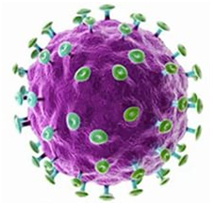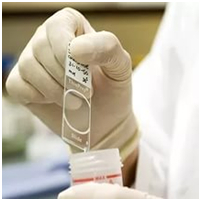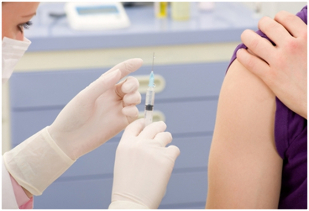
Papilloma virus (HPV) is a major cause of morbidity and mortality throughout the world. To date, this is one of the most common viruses transmitted sexually. The threat of contracting the virus is exposed to a considerable part of the population of different ages.
Every tenth person on the planet infected with this virus.
Some types of diseases associated with HPV have a negative impact on the reproductive function of women. Celebrating mass for the identification of new cases of oncology of the female reproductive system associated with human papillomavirus infections.
From the history it is.
Lesions of the skin and mucus is known to mankind for more than a millennium. Under the name of "warts" were described by the doctors of Ancient Greece. Special significance of infection acquired at the end of the TWENTIETH century. The viral nature of warts it has been shown that at the beginning of the last century, about the sexual way of transmission of infection is reported in 1954
The frequency of condylomatosis in persons of young and middle-aged:
- 1981-1986 years - 5,4%
- 1987-1999 years - 19.1% of
- currently - up to 60%.
What is human papillomavirus infection?
Human papillomavirus infection - chronic viral disease, transmitted from person person sexually.
The causative agent of the infection.
The causative agent of the disease-the virus of hpv (HPV) -is a general name for more than 80 species of viruses, provoking different diseases of the skin and mucous membranes of the body. Any of a group of viruses HPV has its own serial number.

Papilloma virus detectable:
- on the skin
- the mucus membranes of the oral cavity
- heal, mucous membranes conjunctivitis
- the lining of the esophagus shell
- the mucous membrane of the bronchi, larynx
- the mucous membrane of the rectum
- the mucous membrane of the genital organs
Transmission of the virus.
Transmission of the virus happens only from person to person. The main route of transmission - sexual.
Are also possible:
- a contact-household method of transmission of infection in the presence of the UN epithelium - the virus can penetrate into the body through scratches and abrasions, the virus from the infected person stays in the sauna, the gym, the pool, on a towel, razor
- medical staff can become infected by inhaling dust during laser removal of genital warts, infect through the surgical instrument
- the transfer of the child from the mother during pregnancy
Factors contributing to the emergence or recurrence of HPV:
- Hypothermia
- Hormonal disorders
- Medical manipulation (abortion, the introduction of an intrauterine device)
- Pregnancy
The group of HPV infections
- HPV doesn't go on cancerous diseases (warts, skin skin)
- HPV of the low risk of malignant diseases (different types of warts on the genital organs)
- high oncogenic risk (cancer disease in women and men)
The Prevalence of HPV associated disease in the world
- 21 000 - Cancer of the vulva and vagina (In women)
- 40 000 - Anal cancer (In men)
- 60 000 - Anal cancer (In women)
- 530 000 - cervical Cancer (For women)
- 17 300 000 - Genital warts (In men)
- 14 700 000 - Genital warts (In women)
The incubation period of human papilloma virus infection can take anywhere from 2 months to 2-10 years old, is in average 3 months.
For human papillomavirus infection is a typical latent period of time.
The clinical picture of the.
During the infection differently. It may spontaneously disappear, then again deepen.
Issue 3 forms of the course of the disease:
- clinical - the availability of visible papillomas
- subclinical - the lack of visible manifestations, asymptomatic period, recorded only for the use of the examination (colposcopy or the study of cells)
- latent - is defined only on the basis of the analysis of blood
The main symptoms of human papilloma virus infection is the appearance:
- warts;
- papillomas - soft growths that are attached to the skin, thanks to the stem;
- genital warts - growths with a rough surface (usually in the vicinity of the anus and the genital organs).
It is on these symptoms it is necessary to pay attention in the first place.
The consequences of infection with the hpv virus:
- Cervical cancer is in second place in the list of causes of death of women. Life expectancy of sick women is declining, on average, for 26 years. It is shown that 70% of cases of cervical cancer caused by HPV 16 and 18 types.
- Cervical cancer is a completely preventable disease, if detected in an early stage of cancer or the stage of precancer.
- Cancer of the vulva and vagina.
- The anal cancer. Annually registers approximately 100,000 cases of this type of cancer.
- Cancer of the penis. It is called in 35% of cases are HPV 16 and 18, HPV 6 and 11-5% of the cases.
- Anogenital warts. They are caused by HPV 6 and 11. According to WHO, each year registers more than 30 million cases of genital warts.
- Cancer of the oropharyngeal area in young men.
How to detect the presence of virus in the body and its type?

In most cases infection is asymptomatic, so the virus in the patient usually detected only by using special analysis.
Diagnosis of HPV may include:
- clinical examination of the patient;
- examination of the cervix;
- Polymerase chain reaction (PCR) - is an effective method for the diagnosis, which makes it possible to determine the type of virus;
- cytological studies under the microscope studied the character of the cells (smear for Cytology from the uterine cervix);
- a blood test for the determination of antibodies to HPV (this method is used very rarely);
- biopsy - during diagnostic procedures from "suspicious sites" (e.g., from warts or papillomas) receiving tissue particles. In the event that there is suspicion that the patient had cancer of the disease.
What is a pap test?
This is a test, with the help of which you can identify precancerous or cancerous cells in the vagina and the cervix. From the surface of the cervix, or the channel of a special spatula is taken swab. Reprinted material is applied to the glass and is sent to the lab, where the doctors-technicians carefully study the cellular structure. Test is called by the name of the Greek scientist Georgios Nonsense.

When and to whom it is necessary to perform a Pap test?
- Cytological smear is necessary to carry out to every woman at least once a year from the age of 18 years of age or initiation of the sexual life. In case of lack of sexual contacts, the implementation of the analysis, it is permissible to 1 times in 3 years.
- Twice a year the cytological smear is recommended when using hormonal contraception, but also for women who suffer from genital herpes.
- The reason for the more frequent cytological research are the frequent alternation of female sexual partners, being overweight (obesity), infertility, the presence of genital warts of the genital organs.
Prevention of human papillomavirus infection.
With regard to the special danger of this infection, the low efficiency of existing methods of treatment, the highest value shall be the prevention of this infectious disease.
Non-specific prevention:
- sex education for teens
- limiting the number of sexual partners
- the use of condoms reduces the risk of transmission of HPV
- cervical screening, which constitutes the regular examination of women with the help of the Pap-test (pap smears) for early detection and treatment of pathology
- quitting smoking
Specific prevention:

Vaccination against the most dangerous (oncogenic) types of HPV boys and girls aged 12-13 years before the start of sexual life and the possible contact with HPV. After vaccination, formed a strong immunity.
Why is a vaccine for human papillomavirus infection?
Viruses of hpv to cause malignant degeneration of the cells, are the cause of cancer, especially cancer of the cervix.
In recent years, has instead a sharp growth rate of genital tumors in men, in connection with which, increasingly, is put the question of the introduction of HPV vaccination of both sexes.
Currently, the vaccination against HPV is included in the calendar of vaccination in 57 countries of the world, six of them introduced vaccination of both sexes.
The effectiveness of vaccination reaches 98-100%, which has been proven by clinical studies.
Vaccination against HPV is most effective at the beginning of the sexual life, but it is recommended that all women of younger age.
The introduction of widespread vaccination will prevent to 80-82% of all tumors of this group.
Prevention of human papillomavirus infection is one of the most important components of cervical cancer prevention in women and some types of cancer in men.























